Italy has experienced several deadly earthquakes in recent years, including the magnitude 6.3 L’Aquila earthquake in 2009 and magnitude 6.2 and 6.5 events in August and October of 2016. They all occurred within a complicated fault system that challenges our models for fault behavior, hindering understanding of the local earthquake hazard.
A novel array (STAR project) of instruments has been deployed within the Alto Tiberina Near Fault Observatory (TABOO), a state of the art multidisciplinary infrastructure devoted to studying how faults accommodate slip and interact between slow creep and regular earthquakes. This will help geoscientists around the world study extensional faults—the result of Earth’s crust stretching apart—with important implications for seismic hazard and risk assessment globally.
These extensional faults run along the Apennine Mountains near Gubbio in central Italy. The Alto Tiberina fault dips downward to the east at a gentle angle, with a number of steeply dipping faults located above it. The steep and low-angle faults seem to behave quite differently, and the relationship between them is a key question. The recent and damaging earthquakes have occurred on the steep faults, while the deeper portion of the shallowly dipping Alto Tiberina fault creeps—moving too gradually to be detected as earthquakes. That creeping motion is believed to increase stress on the steep faults above, but it is unknown whether the Alto Tiberina fault is capable of generating a large earthquake.
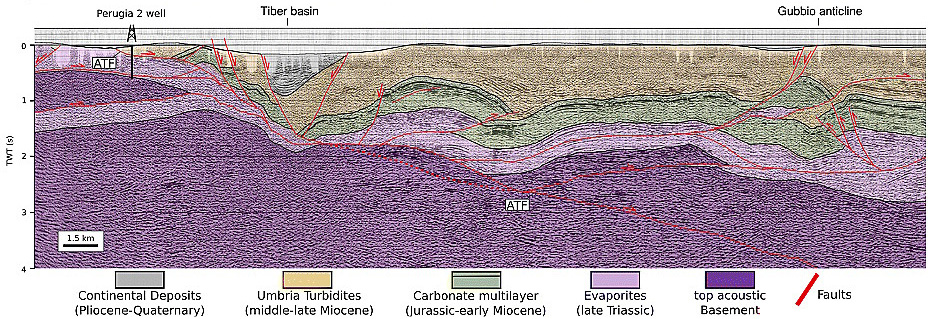
It’s actually surprising that the Alto Tiberina fault slips at all. Given that it is oriented at such a shallow angle, the downward force of the overlying rock should be enough to clamp the fault. Some combination of factors must be counteracting this, like high fluid pressure “lubricating” the fault or weak rocks giving way. The answer to this question is relevant to our understanding of faults elsewhere around the world, as well.
For hazard assessment in Italy, the goal is to understand how the creeping Alto Tiberina fault interacts with the steep faults that produce dangerous earthquakes. By tracking the movements in detail, researchers will be able to understand where and when different portions of the fault are moving. This information will help to determine how the steeper faults are being stressed through time. If enough stress accumulates on a fault to overcome frictional resistance, that fault will slip in an earthquake to relieve stress. Better accounting of stress accumulation allows a better estimate of the risk presented by each fault.
With support from UNAVCO, the latest addition to the TABOO network is a number of borehole strainmeters. These instruments can measure minute deformation associated with changes in the shape of a borehole of less than one millionth of a percent. Located more than 50 meters (160 feet) below the surface, they are isolated from much of the noise that surface instruments suffer from. This means they can detect signals that fall below the detection threshold of more conventional seismometer and GPS/GNSS measurements. In Italy, the addition of borehole strainmeters will reveal subtle activity that is currently undetected on the Alto Tiberina fault, like a doctor using a stethoscope to focus on a patient’s breathing.
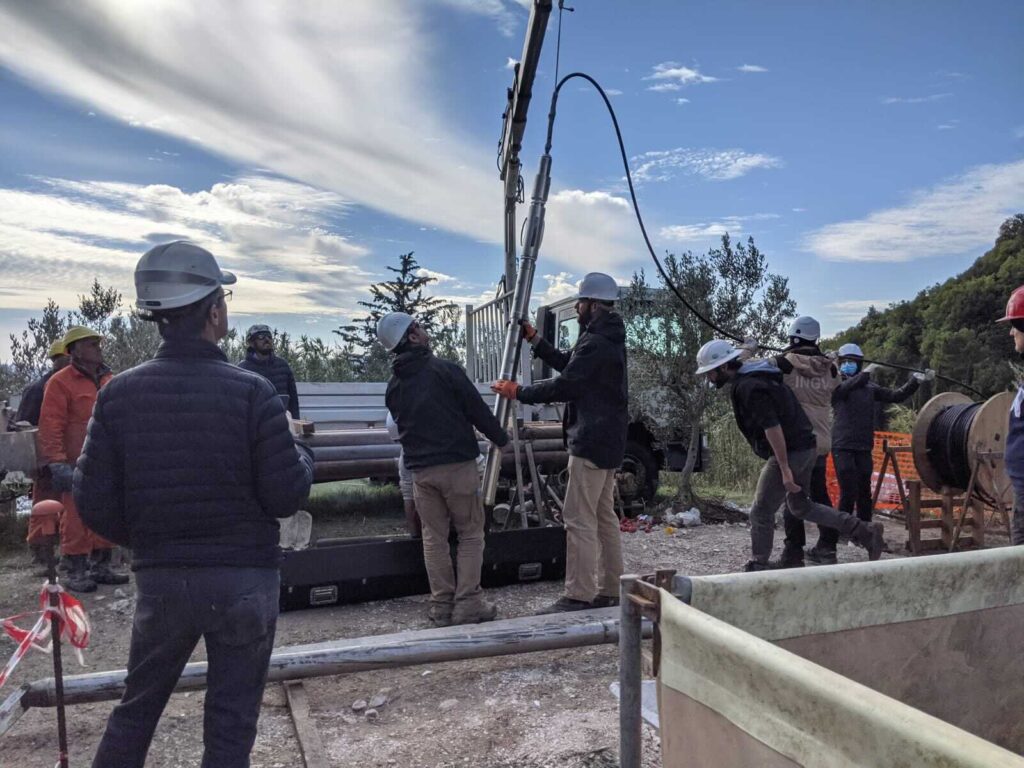
The TABOO-STAR (for “A Strainmeter Array Along the Alto Tiberina Fault System”) project, funded by the International Continental Drilling Program, is an international effort led by Principal Investigator Lauro Chiaraluce from Institute of Geophysics and Volcanology (INGV). The STAR drilling project complements the NSF-funded collaborative effort led by Principal Investigator Rick Bennett at the University of Arizona, which provided the strainmeter instruments and funds for UNAVCO engineer field support.
In September-November of 2021, UNAVCO staff (led by Wade Johnson) helped INGV and an international team, including PhD student Catherine Hanagan at the University of Arizona, drill and install three of the six planned borehole sites. The strainmeters and seismometers—repurposed instruments remaining from the construction of the Plate Boundary Observatory (now Network of the Americas)—were installed at depths between about 75 and 160 meters. The strainmeters are encased in a special expansive grout that ensures a firm connection to the bedrock walls of the hole. Up on the surface, power, data logging, and communications equipment complete the station.
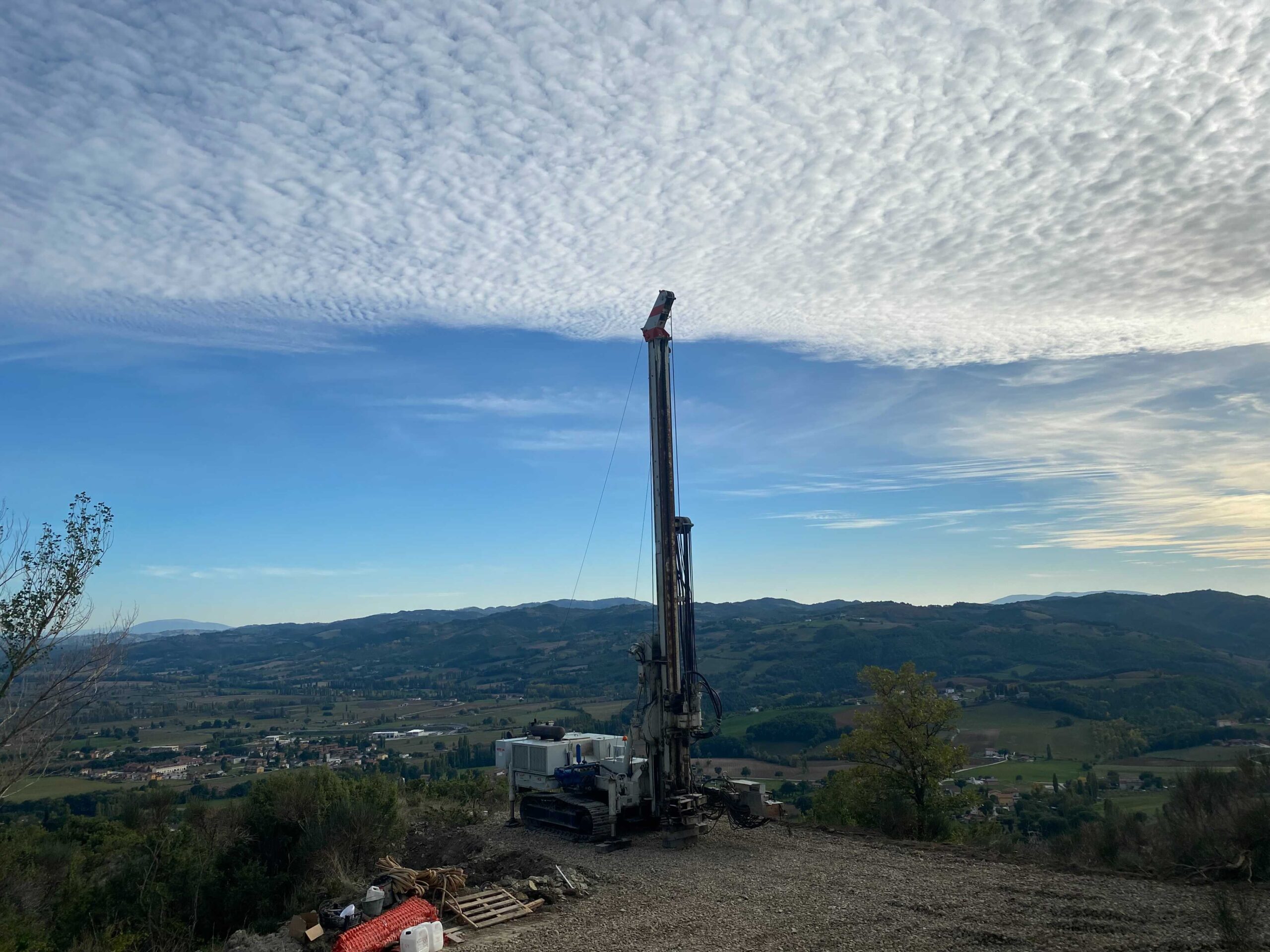
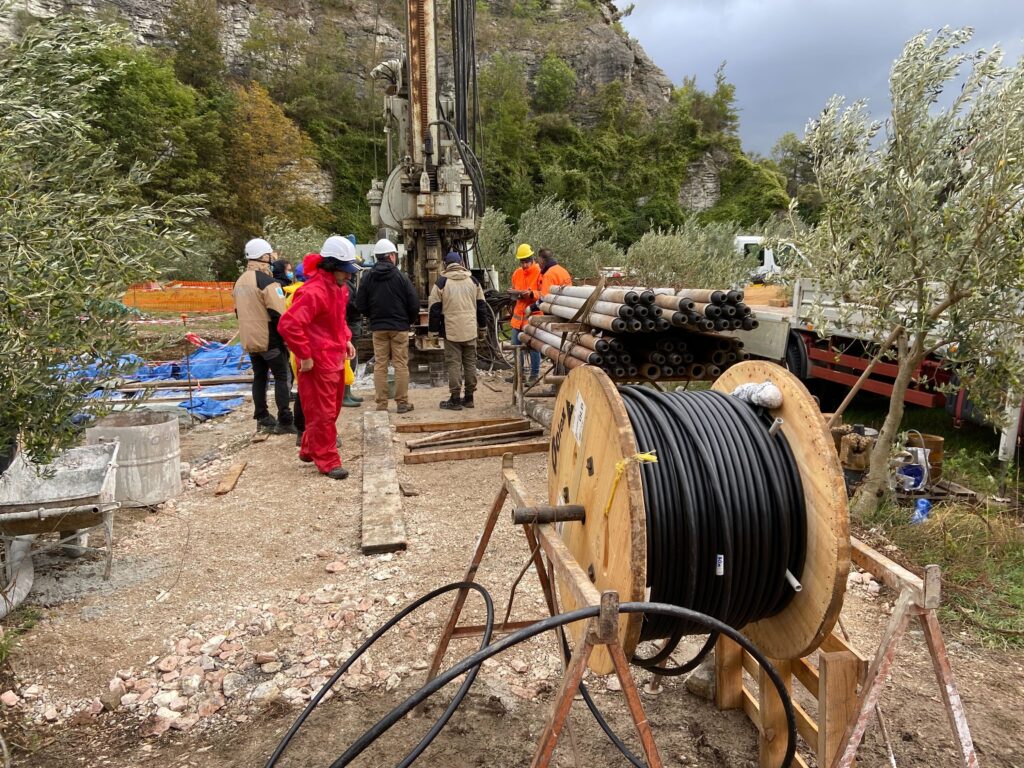
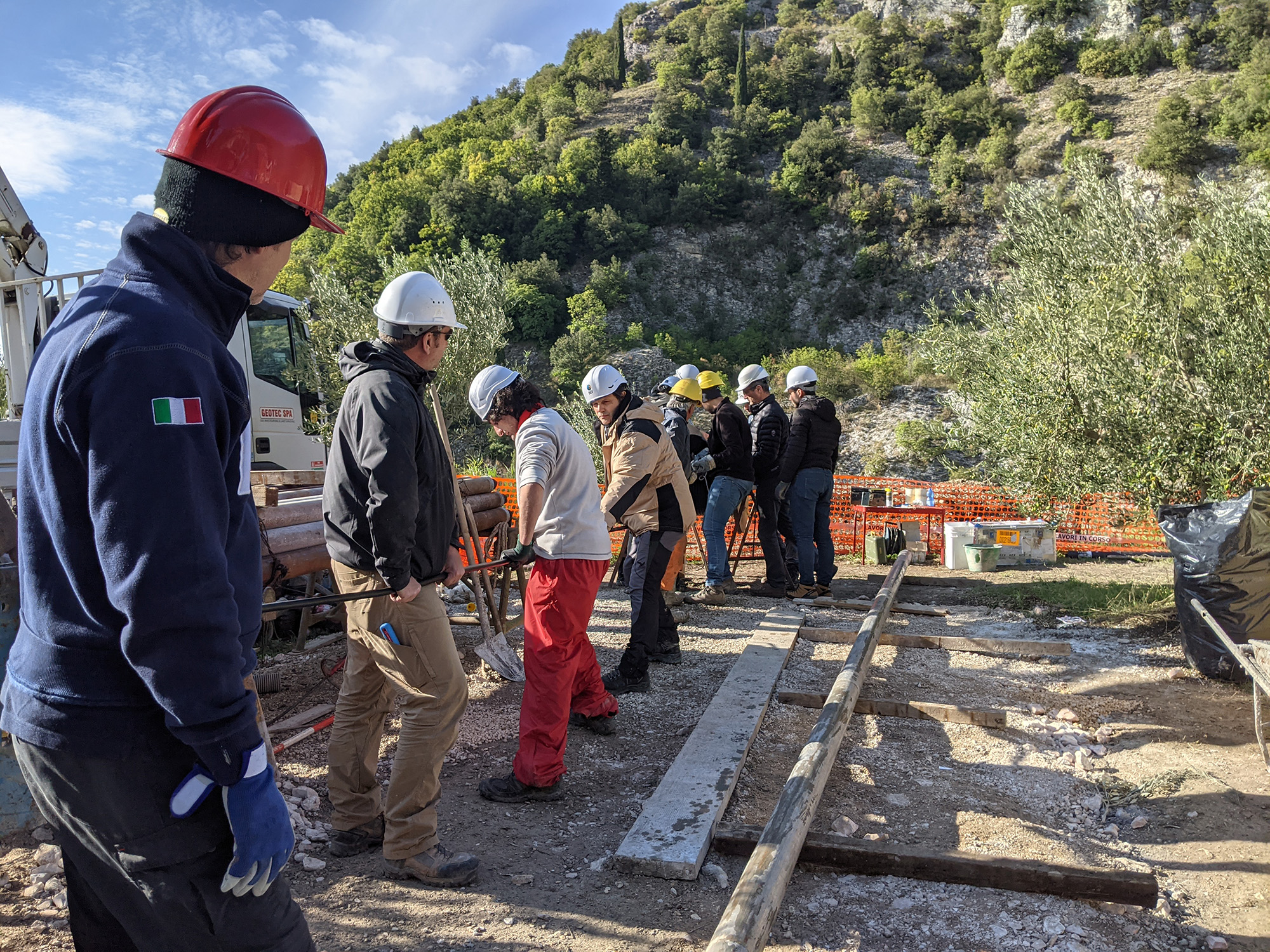
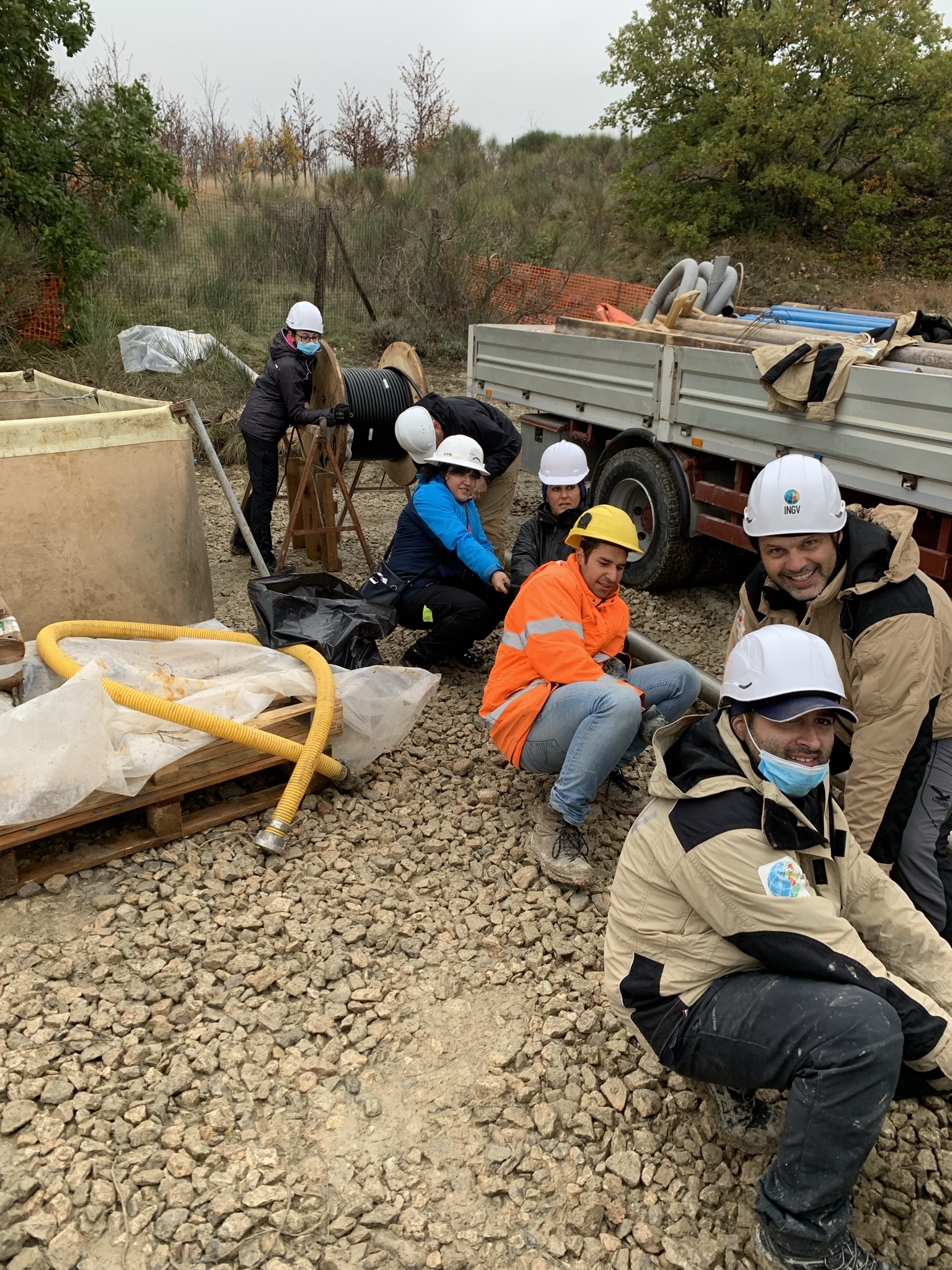
Getting a new strainmeter running takes time, though. First, the grout takes years to completely cure, causing signals that must be corrected for in the young strainmeter data. The instrument must also be calibrated in its new home to accurately relate the strain measured by the instrument to the stress in the surrounding bedrock. Such calibration can be achieved by comparison to predictable lunar tidal strains.
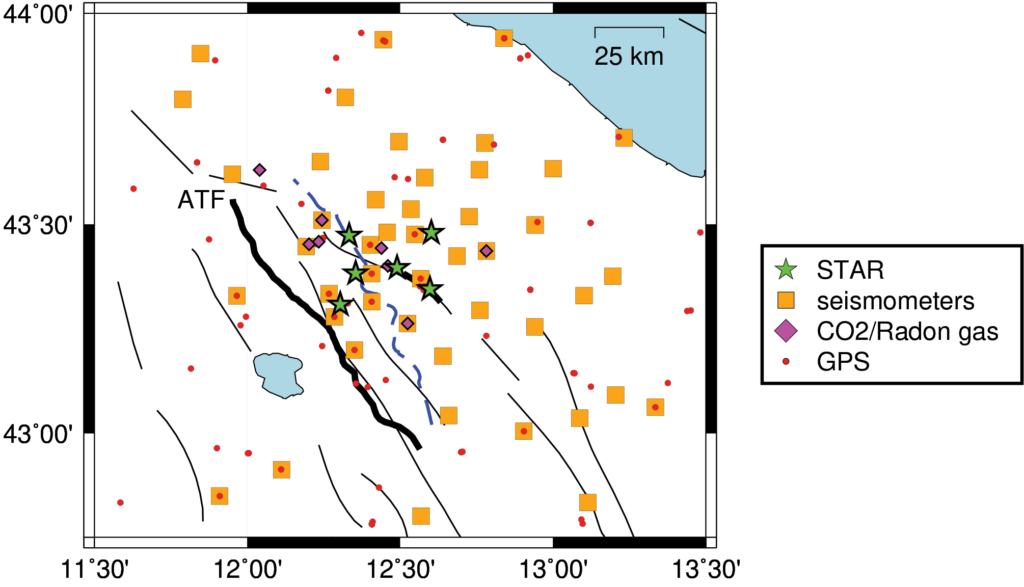
Three more boreholes are planned for the project, with installation currently scheduled for the middle of the year. The existing sensor network is already enabling research, but this will mean identifying events that had previously been going undetected. If another major earthquake occurs, it will be captured in even greater detail. By understanding the way these faults interact with each other, geoscientists can give local communities a clearer picture of the hazard beneath their feet—so they can better protect themselves.
This borehole project is funded by NSF Award #1723045 and ICDP Award ICDP-2018/05. The TABOO Near Fault observatory is supported by Italy’s National Institute of Geophysics and Volcanology and Ministry of University and Research, as well as the European Strategy Forum on Research Infrastructures, European Research Council, and European Plate Observing System (EPOS) ERIC.
Written by:
- Posted: 16 April 2022
- Last updated: 25 April 2022
- Tags: borehole instruments, project highlights, strainmeters


